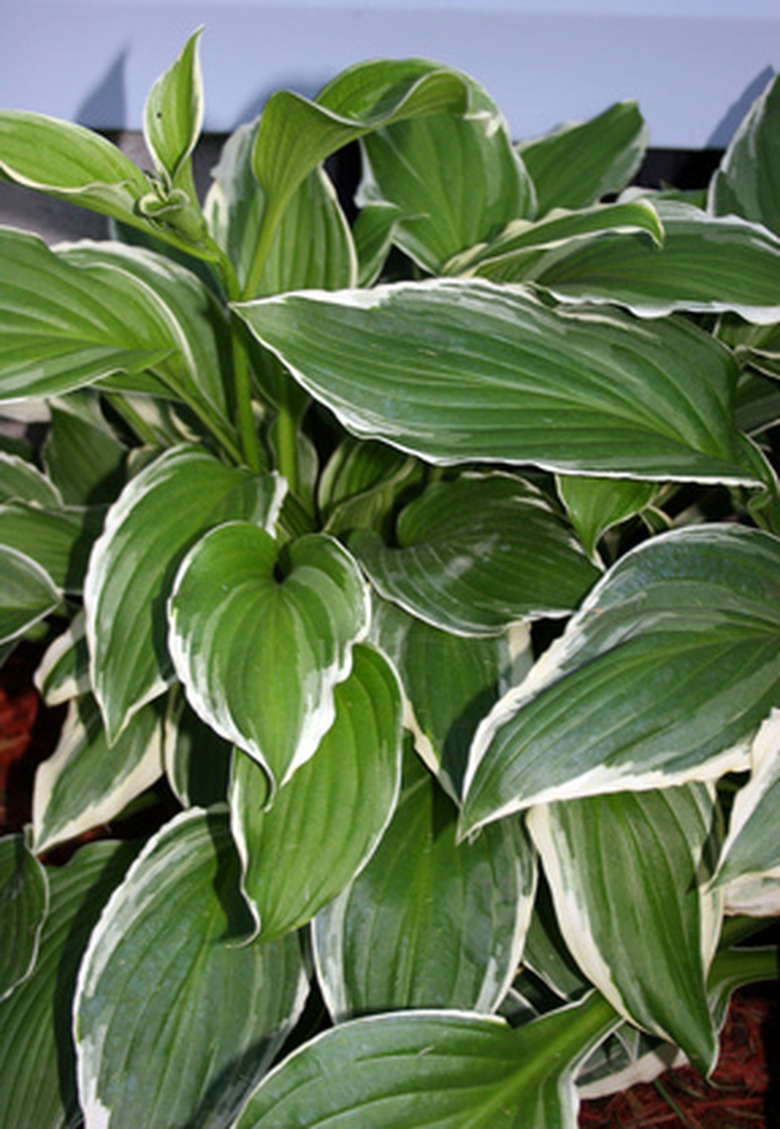Growing Hostas In Texas
Things Needed
-
Pitchfork
-
Compost
-
Shovel
-
Mulch
-
Slow-release 10-10-10 NPK granular fertilizer
Tip
Ferns, also shade-loving plants, make excellent companion plantings for hostas.
Hostas–also called plaintain lilies–are low-growing foliage plants with large, showy leaves that can range in color from deep green through chartreuse into deep blue, with white, lavender or purple blooms in August. There are also variegated cultivars featuring cream, white or yellow centers or borders. Hostas excel as ground cover and add texture and interest to shaded sections of landscapes. Hostas can perform well in Texas as long as they are of the proper cultivar and don't get too much scorching summer sun.
Step 1
Choose vigorous, healthy hostas cultivars with the best chances for growing well in Texas. According to the Texas A and M University Extension, good hostas varieties for Texas gardeners include the green-leafed lancifolia and royal standard cultivars, the blue-leafed blue cadet and blue angel types and the variegated sugar and cream and so sweet varieties. Examine the plant before purchase to make sure it is free of pests and diseases.
Step 2
Choose a planting site in shade or partial sun with afternoon shade and make sure it has rich, moist soil. For more specific recommendations on sunlight, check the cultivar; blue-leaf hostas require more shade than green-leaf varieties, and too much bright sun will bleach out the leaf coloration of the yellow cultivars.
Step 3
Prepare the garden bed in the spring by using a pitchfork to loosen soil to a depth of 12 to 15 inches, then mixing in a 2 to 4-inch layer of compost.
Step 4
Dig a planting hole twice the size of the container the hosta was sold in, and place the hosta in the hole so the top of the root ball is level with the soil surface. Backfill with garden soil and firmly tamp the soil into place but don't press so hard that the soil becomes compacted. Space hostas 36 inches apart if planting more than one. Water your hostas well after planting, and continue to water regularly to keep the soil moist.
Step 5
Apply a 2 1/2-inch layer of mulch to protect the roots, conserve moisture and provide a physical barrier against disease.
Step 6
Fertilize hostas in early spring with a balanced slow-release granular fertilizer in a 10-10-10 NPK formulation. According to the University of Georgia Cooperative Extension, the fertilizer should be applied at a rate of 1/2 pound per 100 square feet.
Step 7
Watch your hostas closely for damage from slugs, to which they are very susceptible. At the first sign of damage use slug bait or make a beer trap by leaving a saucer of beer by the hostas at night; slugs will crawl in and drown.
